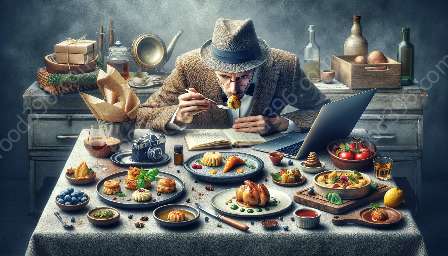Recipe development is a fascinating and dynamic process that plays a crucial role in the world of food and drink. Whether you are a professional chef, a food writer, or simply a passionate home cook, understanding the art of recipe development can elevate your culinary creations to new heights. In this comprehensive guide, we will delve into the intricate world of recipe development, exploring its importance, process, and its harmonious relationship with food critique and writing.
The Importance of Recipe Development
Recipe development is the creative process of formulating, testing, and refining recipes to achieve a desired flavor profile, texture, and presentation. It serves as the foundation for countless culinary creations, ranging from traditional dishes to innovative gastronomic delights. The art of recipe development is a fusion of science and creativity, as it requires an understanding of ingredients, cooking techniques, and the ability to innovate and experiment.
For chefs and culinary professionals, recipe development is essential for curating menus that reflect their distinctive style and culinary vision. It allows them to showcase their expertise and creativity, capturing the essence of a particular cuisine or concept. Meanwhile, aspiring food writers and bloggers can use recipe development to craft unique and engaging content that resonates with their audience, fostering a connection through the art of storytelling and culinary experiences.
The Recipe Development Process
The journey of recipe development begins with inspiration. It could stem from a traditional family recipe, an exotic ingredient, or a newfound cooking technique. Once the initial spark of creativity ignites, it's time to embark on the process of drafting, testing, and refining the recipe. This involves meticulous attention to detail, from selecting the right ingredients and measuring precise quantities to experimenting with cooking methods and flavor combinations.
During the testing phase, careful note-taking is crucial. Detailed records of each iteration, including observations on taste, texture, and visual appeal, provide invaluable insights for refinement. It's not uncommon for a recipe to undergo multiple rounds of testing and tweaking before achieving the perfect balance of flavors and textures.
Another critical aspect of the recipe development process is considering the target audience. Whether it's creating recipes for amateur home cooks or seasoned culinary enthusiasts, understanding the preferences and skill levels of the intended audience is key to crafting recipes that are approachable and engaging.
Food Critique and Writing: A Synergistic Relationship
Recipe development and food critique and writing are intrinsically linked, forming an interdependent relationship in the culinary world. Food critique and writing serve as the platforms for showcasing the fruits of recipe development, offering a gateway for sharing culinary experiences, insights, and recommendations with a broader audience.
For food critics and writers, recipe development provides a wealth of opportunities to explore and unravel each dish's essence. It allows them to delve into the background, inspiration, and nuances of a recipe, offering a deeper understanding of its cultural context, historical significance, and the creativity behind its inception.
Conversely, chefs, home cooks, and food writers benefit from the discerning perspectives of food critics and writers. Constructive critiques and insightful feedback play a pivotal role in refining recipes, enhancing their flavor profiles, and ensuring they resonate with discerning palates.
Conclusion
Recipe development is an art form that embodies the passion, innovation, and storytelling inherent in the culinary world. By mastering the craft of recipe development, chefs, food writers, and home cooks can weave together flavors and narratives that captivate and delight. The journey of recipe development is a testament to the ever-evolving nature of gastronomy and the endless possibilities it offers for culinary expression.

